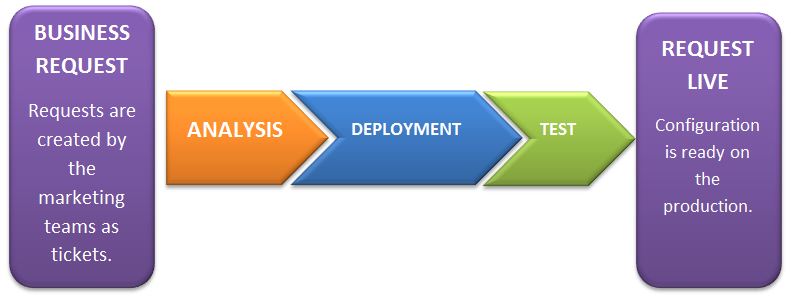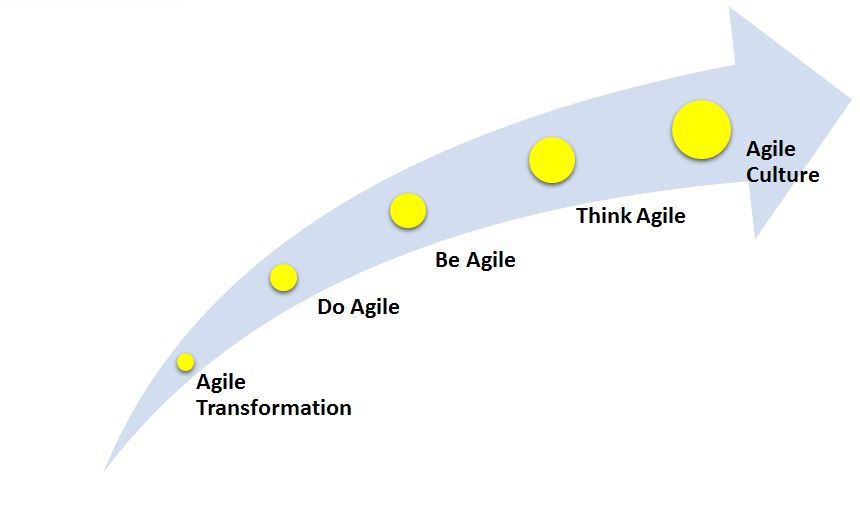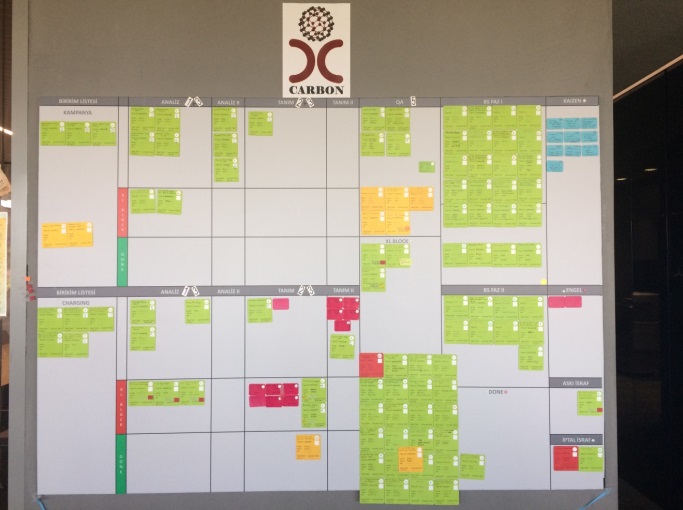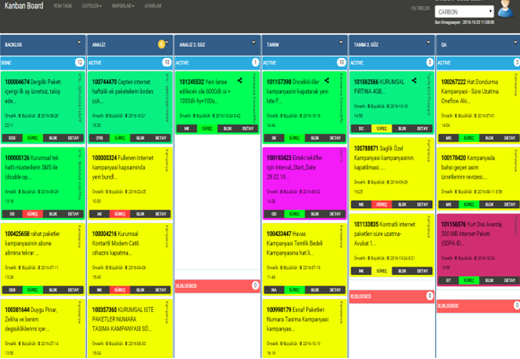Turkcell (ICT-Business Operations) Agile Transformation Story
Going Agile is never an easy process, as this company can attest to. Read on to get their story, and see how they overcame impediments to their transformation.
Join the DZone community and get the full member experience.
Join For FreeTurkcell is a converged telecommunications and technology services provider, founded and headquartered in Turkey where the telecommunication sector is considerably competitive. Turkcell wanted to create an Agile culture in a competitive environment with multiple outsourced vendors. Agile is challenging enough in smaller organizations; however Business Operations (BO), which is a large-scale organization in Turkcell, wanted to increase its productivity and customer satisfaction with Agile. Here’s how we succeeded with Agile transformation.
1. Occurrence of the Transformation Idea
There are five basic products and services such as smart devices, tariff packages, fixed and mobile convergence services, value added services, exclusive gift scenarios, and club memberships. In our Business Operations department, services, tariffs, and campaigns are set off including one or more of these products. Periods and prices of these products are determined by configurations to the system. BO is a multi-vendor organization. There are three different competencies which are analysis, configuration and deployment, and test. The last two competencies are outsourced to two different vendor companies.
There are distinct steps that are followed sequentially in BO, as seen in Figure 1.

Figure 1: General Workflow in Business Operations
Requests were created by the marketing teams as tickets. They were assigned to the analysts. After the analysis was completed, deployment started and then all the configurations were tested.
Before 2015, the Waterfall Model had been performed in BO. Cycle time (the time between the beginning of analysis and the launch time) and the lead time took too long and did not match the expectations of business teams. There were some underlying reasons, such as prioritization problems, pushing systems, working at different places, and lots of different teams running in parallel, that caused this inefficiency.
According to this vision, Agile transformation started in the Turkcell ICT Business Operations department. As it is shown in Figure 2, the Agile roadmap starts with transformation and continues as a kind of culture in organizations. The first step is Agile transformation, and it had been completed in two phases in BO. Agile transformation started in December 2014 and it had been completed in December 2015.

Figure 2: Agile Roadmap
The managers of BO started to research new methodologies to make this system better. From here, they investigated the Key Performance Indicators (KPIs) of BO.
Kanban was decided as the best framework to adopt because of the following reasons:
- To enhance the efficiency.
- To make the lead and cycle time better.
- To put real time prioritization into practice.
- To create synergy between ICT and business teams.
Thereby, the first steps were taken toward Agile transformation. These issues were the challenges of Agile transformation and considerably important. These challenges are organized into four consecutive parts that explain each of these issues in detail.
1.1. Efficiency
As a definition, efficiency is to do things well without waste of efforts and time. From this point of view, there is an increasing need to eliminate the non-value added activities during the market responsiveness.
Production has to be directly proportionate to the number of employees in Business Operations. That means, when the number of employees is increased, the value of productivity will also be increased proportionally, due to the fact that ICT has to be able to respond to dynamic market conditions.
1.2. Lead and Cycle Time
Cycle time refers to the time between the beginning of an analysis and the product launch. Lead time refers to the time between the creation of tickets and the product launch. As it is understood, lead time is the wasted time after the creation of tickets. It is essential to shorten this element of the development process. In contrast to the Waterfall model, Agile will help to achieve this goal.
1.3. Real Time Prioritization
Associated with the marketing conditions, business teams create many tickets. It is important to focus on the important demands rather than the urgent ones. To succeed with this aim, there is an increasing need to prioritize the tickets according to their importance level. With the help of Agile, the product owner can assume this role.
1.4. Synergy Between Business Teams and ICT Department
Business teams want to be informed about the status of their tickets. One of the ways to inform them is reporting your team's status regularly. The other way is to include them in the production process as a part of the team. The product owner can help facilitate this, and it should help achieve transparency within the organization.
2. Agile Transformation Roadmap
So far in our story, our roadmap to Agile transformation had been completed in two phases.
In the first step, in December 2014, Scrum was chosen as our Agile approach. Then, pilot Scrum teams were established.
In January 2015, BO hired an Agile consultant. In terms of a lean and Agile perspective, the process was analyzed and this analysis was shared with the marketing teams. Scrum is based on an incremental and iterative approach during the process. It was understood that Scrum is not appropriate to the business manner in Business Operations department. Moreover, because the shares of Turkcell are traded on NYSE, segregation of competency levels is investigated by SOX audits.
In March 2015, a new Agile approach was chosen, called Extended Kanban. Kanban is helpful to the structure of Business Operations department to meet the market demands in a faster and effective way with real time prioritization (Extended Kanban is explained in detail in section 2.2).
In the second quarter of 2015, pilot teams were established and pilot schemes were started. By establishing a new Kanban team, all the employees were gathered together in the same location.
Team members chose their Kanban masters by secret ballot. (Because the framework is Kanban, these masters are called as Kanban Masters, like Scrum Masters.) Kanban boards were designed. Product owners were determined for those teams. Score cards were reorganized on the basis of the motto, “One Team, One Goal.” 70% of the score card is related to the team goal without differentiating the vendors. 30% of the score card is related to the individual goals.
In July 2015, a pilot teams event was organized to motivate the newly transformed teams and to help the other teams get introduced to the idea of an Agile/Kanban transformation. Empowering the organization was the main goal.
August 2015 was the second step in our transformation. It was the time of our Transformation Kick-Off. In Business Operations, 9 Kanban teams had been established by December 2015 and the transformation had been completed.
2.1. Evolution of the Kanban Board
During the transformation, Kanban boards had also been transformed according to necessity. A digital board was aligned with the process tools and was used to see Andon (the alerts that refer to the threats for quality or efficiency) and to measure the T2M and effort. Having the ability to measure and quantify is the most important factor to change business operations in an effective way.
The evolution of the Kanban Board can be seen in Figure 3.

Figure3a. Sticky Notes Kanban Board

Figure3b. Magnetic Kanban Board

Figure3c. Digital Kanban Board
2.2. Extended Kanban
The underlying reason to call the approach Extended Kanban is that it integrates the best experiences from both Scrum and Kanban, while also considering the principles of the Agile Manifesto and Lean Philosophy.
As considered in the Agile Manifesto, individuals and interactions are great reminders of where to focus the Business Operations department. To build something useful, Business Operations emphasizes working products rather than documentation. Also, all the members focus on being flexible and accommodating customer collaboration, rather than contract negotiation. Business Operations acknowledges that things will change, so they don’t spend time trying to manage a plan. They respond to the change.
Openness, commitment, and rituals such as ‘Retrospective Meetings’ and ‘Daily Meetings’ are taken from Scrum. A pulling system and WIP limits are taken from Kanban. In terms of a lean perspective, the goal is to create value by considering ways to continuously improve.
In Business Operations, business continuity is provided by competency committees. There are 5 different competency committees which are: the Governance, Kanban Master, Analysis, Deployment, and Quality Assurance Committees.
Summary
To sum up, our Business Operations department had completed its Agile transformation within a year with the facilitation of management in the organization. Two different Agile approaches were applied, and finally ‘Extended Kanban’ was chosen. 9 Kanban teams were established, full of motivated employees. Synergy was created between Business and ICT teams. Related to these enhancements, the increase in productivity is about 25%, the decrease in time to market is about 30%. That’s why customer satisfaction has increased by about 50%. Business Operations experienced many changes during its transformation and it adapted to these changes. After the transformation, it’s time to complete the next steps until the organization fully adopts the Agile culture.
Opinions expressed by DZone contributors are their own.

Comments